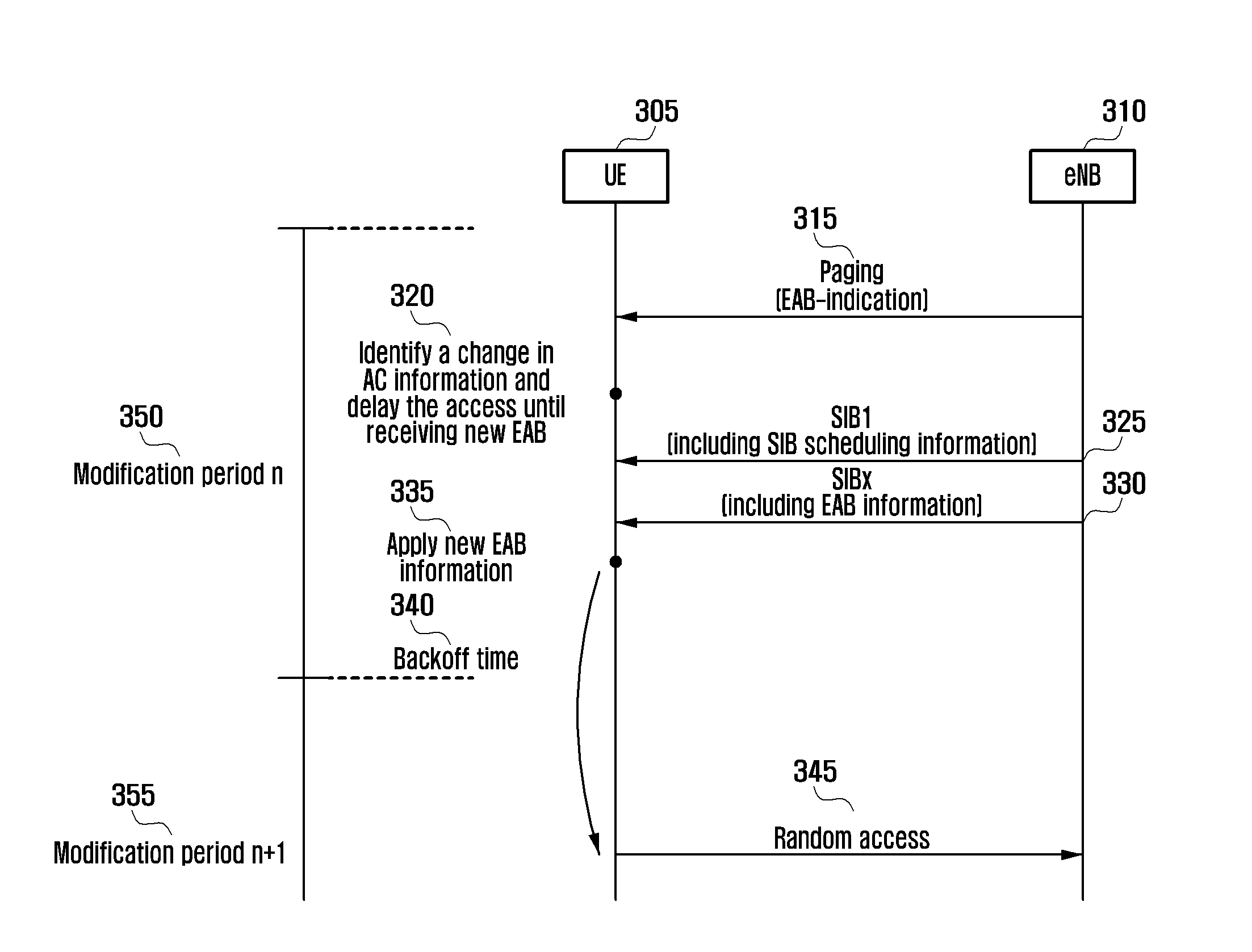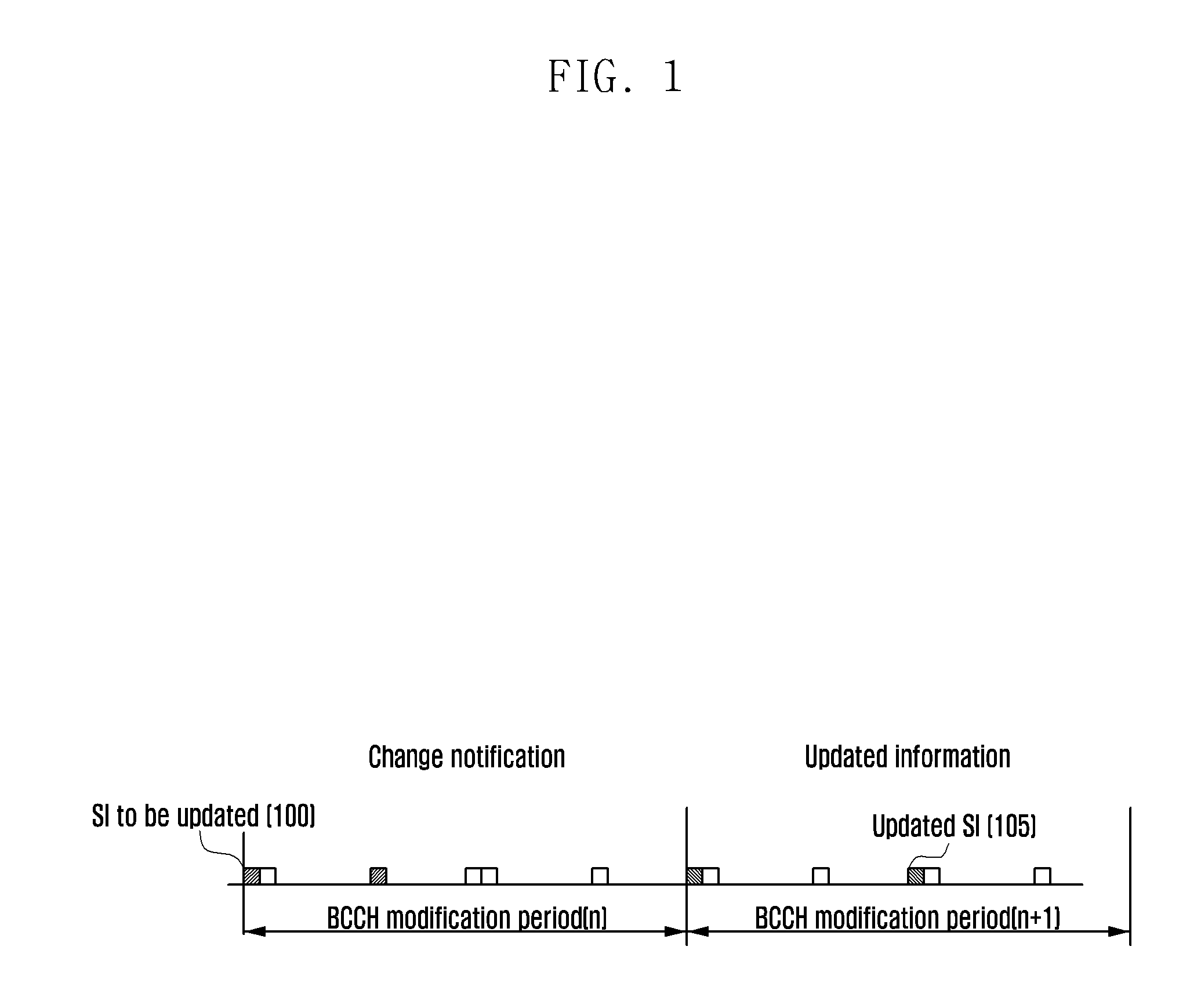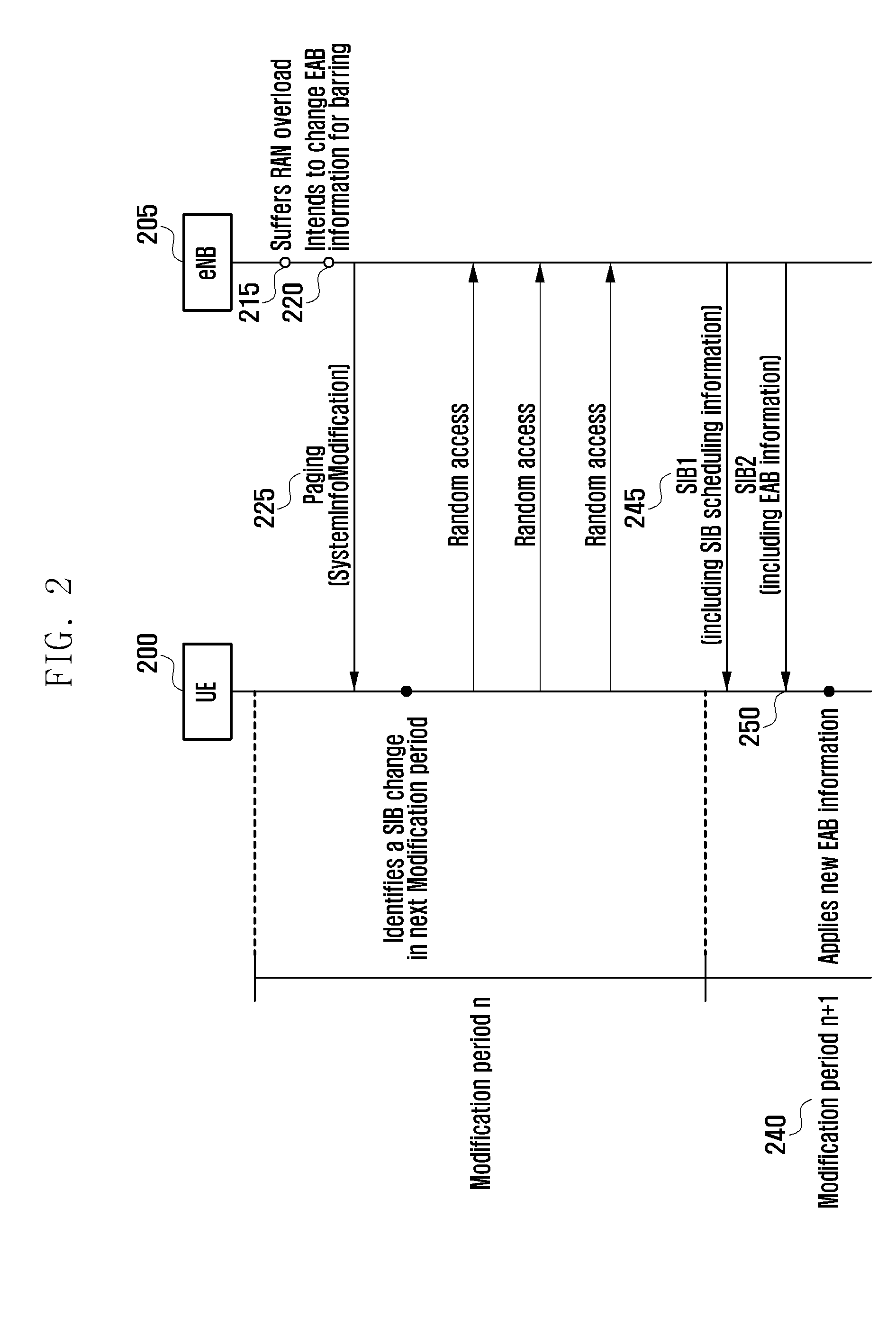Access control method and apparatus of ue
a control method and control apparatus technology, applied in electrical apparatus, machine-to-machine/machine-type communication services, network topologies, etc., can solve the problems of a large amount of radio network load, a relatively long time for the enb to acquire the sib, and the failure of initial attachment of most mtc devices, so as to reduce the load of the radio access network.
- Summary
- Abstract
- Description
- Claims
- Application Information
AI Technical Summary
Benefits of technology
Problems solved by technology
Method used
Image
Examples
first exemplary embodiment
[0041]In a first exemplary embodiment of the present invention, the EAB information change, such as the ETWS, is indicated in the paging message. If a paging message including an indicator indicating the EAB information change is received, the delay tolerant MTC device may stop the use of the old EAB information and wait for acquiring new EAB information. The MTC device may receive the SIBx scheduling information including the EAB information from the SIB1 immediately without waiting for the arrival of the next modification period to acquire the EAB-related information from the SIBx.
[0042]If the UE is not a MTC device but a normal device, the UE ignores the paging message including the indicator related EAB information. The SIBx means a SIB including the EAB information. The MTC device determines whether an access is permitted using the AC-related information. If the EAB information indicates an access is not permitted for the MTC device, the MTC device delays the attempt to access....
second exemplary embodiment
[0051]In a second exemplary embodiment of the present invention, if the EAB-indication is received in the paging message, the UE delays random access until the arrival of a next modification period. If the random access is required, a delay tolerant MTC device waits for the next modification period and attempts random access by instantly applying the new EAB information received in the next modification period rather than the current access information. That is, if an event triggering an initial random access takes place, the UE waits for the next modification period to refresh the EAB information and attempts the initial random access.
[0052]FIG. 5 is a signaling diagram illustrating an access control method according to the second exemplary embodiment of the present invention.
[0053]Referring to FIG. 5, if it is determined to control an initial random access of a MTC device (UE) 505 due to a network overload, the eNB transmits a paging message including an EAB-indication IE to the U...
third exemplary embodiment
[0056]In a third exemplary embodiment of the present invention, the EAB information change is not explicitly notified, and the modification period is not used. However, the SIBx including the EAB information is transmitted periodically unlike other SIBs. In an exemplary implementation, the modification period is referred to as a repetition period. If it is necessary for the UE to perform the random access, the random access is delayed until the SIB1 is received. The SIB1 may include the scheduling information on the SIBx.
[0057]If the SIB1 does not include the SIBx scheduling information, the UE may immediately attempt the random access. If the SIB1 includes the SIBx scheduling information, the UE attempts the random access using the EAB information updated based on the SIBx received by referencing the scheduling information. As a result, there is a drawback in that all of the UEs simultaneously attempt access at the SIB1 reception timing when the access barring is not executed. That...
PUM
 Login to View More
Login to View More Abstract
Description
Claims
Application Information
 Login to View More
Login to View More - R&D
- Intellectual Property
- Life Sciences
- Materials
- Tech Scout
- Unparalleled Data Quality
- Higher Quality Content
- 60% Fewer Hallucinations
Browse by: Latest US Patents, China's latest patents, Technical Efficacy Thesaurus, Application Domain, Technology Topic, Popular Technical Reports.
© 2025 PatSnap. All rights reserved.Legal|Privacy policy|Modern Slavery Act Transparency Statement|Sitemap|About US| Contact US: help@patsnap.com



